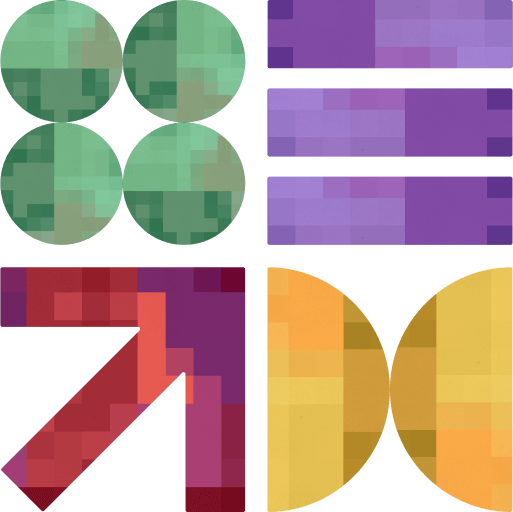Future of IoT – 5 Predictions for 2024

The future of IoT can be summarized in one word: BRIGHT.
Despite claims of its death, the Internet of Things (IoT) will continue reigning even beyond 2024. Therefore, you’ll be doing yourself and your business a favor by being prepared for it.
“Just How Confident Are You About the Future of the Internet of Things?”
Very. The amount of growth IoT had in 2023 is a good indicator of the future of IoT. And the numbers further confirm this –
- By 2024, the IoT industry will be worth $1 trillion. (Exploding Topics)
- The global IoT market size was expected to grow 19% in 2023, making it worth $486 billion. (CompTIA)
- There’s a lot of growth in the future of IoT devices – around 500 billion devices come 2030. (Cisco)
- In 2017, only 20% of the world population had LPWANs (low-power wide-area networks). However, that number will soon reach 100%, empowering the growth of IoT applications. (McKinsey)
- Over 80% of business executives believe in the power of IoT. Around 28% have investment plans ready whereas 54% already believe in its results. (Statista)
These numbers barely scratch the surface of the future of IoT. Industry-specific statistics further show the impact of this technology on workflows.
“What Might the Internet of Things Do in the Future?”
There are many exciting IoT future trends and predictions coming your way. Some of these can easily be integrated into your business to ensure more success. So, without further ado, here are the top five for 2024.
1) Digital Twins Will Become Widespread
Digital twins are virtual replicas of physical objects, systems, or processes. Leveraging data and simulations, they mirror real-world entities. Therefore, they provide insights into performance, facilitate predictive analysis, and enhance decision-making.
Widely used in IoT and Industry 4.0 technologies, digital twins optimize efficiency, monitor assets, and improve overall operational understanding.
With the spread of digitization and growth of sensor technology, digital twins will be visible in more industries. In fact, experts believe the technology will become more mainstream from 2024 onwards.
Some areas where digital twins will make a difference include –
- Healthcare – Digital twins can model individual patient conditions. As a result, they can personalize treatments and advance precision medicine.
- Supply Chain – The technology can optimize supply chain operations. This will result in higher efficiency, lower costs, and better overall resilience.
- Space Exploration – Digital twins can help in mission planning and analysis by simulating spacecraft and planetary conditions.
2) The Future of IoT Will Link with AI
Artificial intelligence (AI) focuses on creating intelligent machines that can perform tasks that require human intelligence. Examples of such tasks include problem-solving, speech recognition, and decision-making.
AI and IoT have a very close connection for years now. They complement one another, enhancing the capabilities of connected devices and systems. For instance –
- AI enables IoT devices to analyze and make sense of the vast amounts of data generated. Machine learning algorithms can then identify patterns, anomalies, and trends within IoT data.
- Smart devices equipped with AI can adapt and respond to changing conditions. This, in turn, optimizes performance and efficiency.
- AI empowers IoT devices to make real-time decisions based on incoming data. This is particularly useful in scenarios where quick responses are critical, such as in industrial settings or autonomous vehicles.
In 2024, you can expect more industries to adopt both technologies in processes such as manufacturing and logistics.
3) IoT and 5G Will Reshape Many Industries
IoT development will thrive with 5G in the picture.
The hype for the fifth generation of mobile networks stems from its transformative impact on communication and connectivity.
5G promises significantly faster data speeds, reduced latency, and increased network capacity compared to its predecessors. As a result, this will bring revolutionary advancements in various sectors, including autonomous vehicles, augmented reality, and IoT.
The technology’s potential to support massive device connectivity and deliver seamless, real-time experiences are also reasons for its appeal. Therefore, 5G is expected to revolutionize how we live, work, and interact with the digital world.
As the technology becomes more stable and widespread, the future of IoT will expand to new horizons. One industry that can especially benefit from IoT and 5G together is the automotive industry.
Connected car services are in demand, especially as they increase vehicle-to-vehicle communication and reduce collisions. BMW has already struck a deal with AT&T to provide this tech. And currently, a few BMW models support calls through vehicles even when drivers don’t have their phones with them.
4) The Future of IoT Devices Will Be Linked with Edge Computing
Edge computing enables data processing to occur closer to the source of data generation. It shifts computation tasks to the edge of the network, allowing devices to process data locally. As a result, it ensures real-time responsiveness and supports applications in IoT, AI, etc.
Integrating edge computing is one of the popular IoT predictions for 2024 so far. Especially considering the benefits both technologies offer in combination, including –
- Real-time responses in IoT applications
- Reduced bandwidth usage and optimized network efficiency
- Local data processing to enhance privacy and security
- Scalable IoT deployments
- Cost-savings due to reduced cloud resources and lower data transmission costs
- System reliability even if there’s a disruption in the central cloud
The spread of the intelligent edge can also positively impact the future of IoT. In fact, experts believe it can deliver better business outcomes and enhance solutions and experiences.
5) IoT Chips Will Continue to Reign in 2024
IoT chips were deemed the future of IoT in 2023. This won’t change in 2024, especially as experts believe the technology will grow more popular.
IoT chips enable devices to collect, process, and transmit data to the internet. What makes them more powerful is that they can be tailored to specific-use cases such as sensors, actuators, or communication modules.
In the upcoming year, you can expect to see innovation at the chip level. Especially related to edge computing and AI. While chip shortage may slow this down a little, companies are investing in robust supply chains. Moreover, they’re contracting more chip manufacturers to avoid relying on a small number.
Ready to Harness the True Power of IoT?
Whether you need help with smart home IoT development or a new, innovative IoT solution, DPL can help. With our knowledge of the best practices and the future of IoT, your next great idea is just a few form fields away.
Fill the form below and let’s collaborate on your next multi-million idea.





